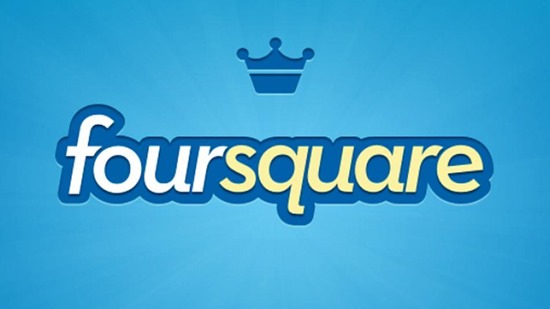May 9, 2005: Early Monday morning I ventured onto Xanga to be one of the cool kids and start my own blog. While I wrote the majority of my inaugural post on May 8, it hit the interwebs on at 22 minutes past midnight on the 9th. Today I am ten years and (only) 770 posts later into my blog, still (somewhat) posting.

Bethany and I back in 2005
It’s a bit surreal to go back and read some of my initial posts, being younger and more naïve about who would actually take the time to write the posts. I started off using my Xanga as most 20-somethings would: as a personal diary to capture my thoughts and post all of the random stuff that I didn’t think would interest anyone. I’ve always enjoyed writing, but didn’t have a lot of opportunity do it outside of email. A couple of years and two platforms later, I started to get some Google Juice into my blog and found that when I complained about things, people in similar situations (or perhaps seeking to solve them) would start to respond. As small as it was, I realized that I started to have a platform.
However over the years, I’ve dwindled in my posting – something I really regret. Despite multiple attempts to jump-start my blogging cadence, my posting rate sputters out and this blog lies dormant for months on end. What once started with daily posts turned into goals of posting a few times per week, then at least once a month, with months passing in between posts. I’m not sure how many people use RSS or blog subscriptions to keep tabs on my blog, but I apologize to those of you that do. I’m sure that you’ve wondered multiple times if my blogging days are over.
The truth is that I still love blogging, still have a lot to share (actually probably more than I did ten years ago), but there are many reasons why blogging has gotten away from me:
The “Time” Factor
Let’s start with the premise: blogging takes a lot of time. When I’m going strong in my posts, I find that I need to carve out at least a half hour to formulate my thoughts and get things posted. While I write I start to refine my thoughts, go through revisions and typically won’t hit “publish” until an hour after I started writing. A decade ago (it’s crazy writing those words), I was able to sacrifice sleep in the name of blogging, but now due to age and commitments, that’s not a sacrifice I’m able to make. As most parents can attest, once you have kids you’re pretty much tired all the time, looking forward to any rest you can get. Blogging would often take a back seat.
Work Demands Most of Me
Luckily in the course of ten years, I’ve been fortunate enough to make advancements in my career. Of course that means more responsibility, with an obligation to meet those responsibilities. While I used to be very successful in compartmentalizing my work and home computer time, I’ve been pretty terrible at doing that lately. If I do find myself with laptop time on my hands, I usually end up triaging work emails and trying to catch up on loose ends. This is definitely a good thing, I never would want to be stagnant in my job and I do appreciate the opportunities that I have – it’s just that blogging now goes down another rung in the latter.
Families Are Important
God Bless Bethany, who is always really supportive of my crazy activities. She’s been a saint about being patient and understanding of the nights I’m away from home with my various music projects, volunteer efforts and family and friend commitments. Nonetheless, I try my hardest to be a good husband and father and give as much time as I can to my deserving family. The Xbox has now become a video-streaming machine, having last played a game back in 2014. In the midst of our busy lives with work and other obligations, we take any opportunity we have to spend time as a family and cherish Clara’s childhood. Being present to your family does take a lot of work, and once again, blogging (rightfully) takes a back seat.
I’m worried what other people will think
There’ve been points in my posts where I’ve shared some very personal and raw reflections on my experiences. In a lot of ways, those are my best posts. However thanks to Google, Facebook and other social media outlets, my blog has been easier to find and associate it with me. This gets into my head and causes me to fret about who may stumble onto these posts and what they’ll think. I’ve always been good about avoid stupid mistakes (in naming names or disparaging situations and people that could result in severe consequences), but oftentimes I to too far in my worry about how posts will be perceived by people who are least likely to read my blog.
I’m too busy doing cool things to write about them
This goes back to the “time” argument, but as I was thinking about this post, I do think I have a lot more cool stuff going on in my life than I did a decade ago, and because of the limited time I just not make the time to share it. This does frustrate me, as I do think there’s a fine balance between living in the moment and not preserving any memories. One of my favorI ite times to blog is when I’m visiting exotic places and having some cool experiences. I do have a list of blog topics where I want to share some of these things, but next thing you know they’ve occurred six months ago and no longer seem relevant. Part of me needs to accept that I don’t need to write long essays about each experience, maybe less words will accomplish the same goal – which brings me to the biggest detriment in my blogging career.
Twitter
I jumped onto Twitter pretty early on, back in 2007. For me, Twitter always made sense and it’s still one of the most valuable communication platforms that I use today. Moreover, Twitter does allow me to express my immediate and raw thoughts, in an easy method that doesn’t require the commitment of a revised essay. Do I have an opinion about what’s going on? Can I express it in 2-3 sentences? Can I do it from my phone? Done.
Did I get to express my full views on the issue? Probably not, but I got the gist of it out, and if I do have more to add I’ll just post another Twitter post. Whether platforms like Twitter have propagated the “bite-sized communication” movement – for better or for worse – we live in that society today. The fulfillment I get from self-expression is often satisfied from using Twitter. If you’re looking for the most accurate and unapologetic depiction of my view of the world, follow me on Twitter.
The problem is that my poor blog has suffered. There have been times where I’ve tried to port some Twitter posts to my blog, but the two platforms make as much sense as dogs and cats living together.
So thank you for joining in my Blogiversary. Please accept my apologies and explanation as to why this is not a more significant event, because let’s face it: averaging one post every 21 days isn’t that impressive. However please accept yet another commitment that I’ll keep checking in with my blog when I can and share some cool things that happen to me and my family. Thanks for joining me on this ride, here’s to another 10!


